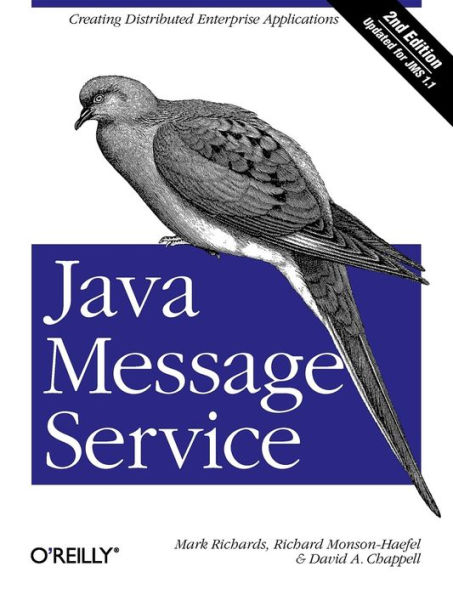Java Message Service, Second Edition, is a thorough introduction to the standard API that supports "messaging" -- the software-to-software exchange of crucial data among network computers. You'll learn how JMS can help you solve many architectural challenges, such as integrating dissimilar systems and applications, increasing scalability, eliminating system bottlenecks, supporting concurrent processing, and promoting flexibility and agility.
Updated for JMS 1.1, this second edition also explains how this vendor-agnostic specification will help you write messaging-based applications using IBM's MQ, Progress Software's SonicMQ, ActiveMQ, and many other proprietary messaging services.
With Java Message Service, you will:
- Build applications using point-to-point and publish-and-subscribe messaging models
- Use features such as transactions and durable subscriptions to make an application reliable
- Implement messaging within Enterprise JavaBeans (EJB) using message-driven beans
- Use JMS with RESTful applications and with the Spring application framework
Messaging is a powerful paradigm that makes it easier to uncouple different parts of an enterprise application. Java Message Service, Second Edition, will quickly teach you how to use the key technology that lies behind it.
Java Message Service, Second Edition, is a thorough introduction to the standard API that supports "messaging" -- the software-to-software exchange of crucial data among network computers. You'll learn how JMS can help you solve many architectural challenges, such as integrating dissimilar systems and applications, increasing scalability, eliminating system bottlenecks, supporting concurrent processing, and promoting flexibility and agility.
Updated for JMS 1.1, this second edition also explains how this vendor-agnostic specification will help you write messaging-based applications using IBM's MQ, Progress Software's SonicMQ, ActiveMQ, and many other proprietary messaging services.
With Java Message Service, you will:
- Build applications using point-to-point and publish-and-subscribe messaging models
- Use features such as transactions and durable subscriptions to make an application reliable
- Implement messaging within Enterprise JavaBeans (EJB) using message-driven beans
- Use JMS with RESTful applications and with the Spring application framework
Messaging is a powerful paradigm that makes it easier to uncouple different parts of an enterprise application. Java Message Service, Second Edition, will quickly teach you how to use the key technology that lies behind it.

Java Message Service: Creating Distributed Enterprise Applications
330
Java Message Service: Creating Distributed Enterprise Applications
330Related collections and offers

Product Details
| ISBN-13: | 9780596555603 |
|---|---|
| Publisher: | O'Reilly Media, Incorporated |
| Publication date: | 05/19/2009 |
| Sold by: | Barnes & Noble |
| Format: | eBook |
| Pages: | 330 |
| File size: | 3 MB |
